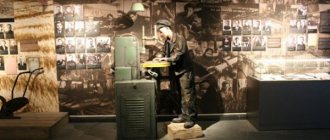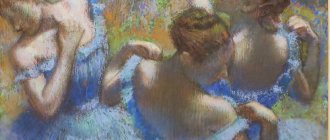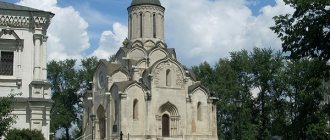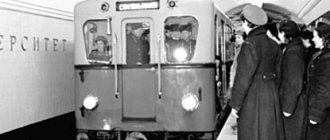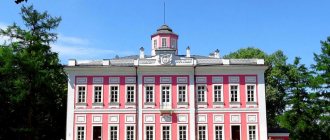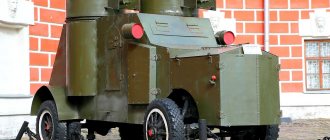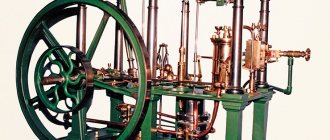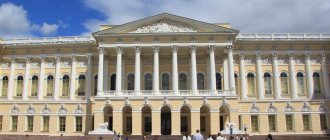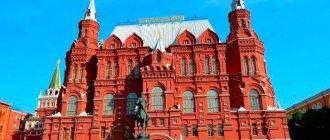History of the museum
Felix Vishnevsky
The founder of the museum is rightfully considered to be Felix Evgenievich Vishnevsky , a Moscow collector and philanthropist. In 1969, he donated more than 250 objects of painting , graphics and decorative art to the city of Moscow, ending the list of gifts in a truly royal manner - with a mansion built in the 17th-18th centuries, in which the entire collection was housed. This ancient building previously belonged to the famous polar explorer and Arctic explorer Nikolai Petukhov , who gave it to his friend Vishnevsky.
Vishnevsky himself was a great enthusiast of his work and throughout his life he donated more than eight hundred different objects of art . As his grandson recalls, Felix Evgenievich loved to search for and restore ancient objects, and he found most of his truly huge collection in truly disrepair.
Over the forty years since then, the museum's collection has increased at least eight times, but the size of the museum has remained the same. As a result, the V.A. Museum Tropinina is considered one of the most cramped museums in the capital - it is designed for an excursion group of only 15 people. The museum's exhibition space is a measly 217 square metres, with a further 73 allocated for temporary exhibitions.
Halls and exhibitions
A distinctive feature of the museum is its intimacy, preserving the atmosphere of an old Moscow house. The theme of the museum's expositions and exhibitions is very attractive to visitors; it represents the art of Tropinin's time.
The museum has one of the significant collections of works by V.A. Tropinin - the founder of the “Moscow school” of painting, the favorite portrait painter of Moscow in the 1st half of the 19th century, as well as the works of outstanding artists of the past: I.Ya. Vishnyakova, I.P. Argunova, A.P. Antropova, F.S. Rokotova, D.G. Levitsky, V.L. Borovikovsky, S.F. Shchedrina, S.S. Shchukina and others.
The museum's funds contain paintings by famous masters of the 19th century: I.K. Aivazovsky, A.N. Benois, V.M. Vasnetsova, I.I. Levitan, K.A. Korovina, V.D. Polenova and others.
The Tropinin Museum has a very small area, but every minute here brings true aesthetic pleasure. This one-story mansion with a mezzanine glows with bright yellow plaster. The entrance to the museum starts from the stairs leading to the ground floor.
There is a cloakroom for visitors and six exhibition rooms, four of them permanent and two temporary.
Portraits of Moscow nobles, not the most distinguished ones, hang among the old, high-quality furniture. Due to the fact that there are no high gallery ceilings above, the faces in the skillful portraits seem not to be the faces of long-dead ancestors, but the friendly images of dear interlocutors.
The feeling of presence is enhanced by well-chosen furniture. Silver mirrors darkened by time, gilded picture frames, rare types of wood, porcelain trinkets coexist with expensive dishes, which were an educational tool of those times. It depicts the virtues that a cultured person should develop in himself.
For example, on an antique sugar bowl there is a picture of a sheep and the word “meekness” is written in French. The furniture is also not simple, now you can no longer find such interior items as a jardiniere or a bobby, but in the Tropinin Museum you can see them and find out how they were used.
Two rooms display paintings by Tropinin and artists from his circle. In the third - paintings and busts of masters of the previous generation, for example, a bust of Potemkin and Catherine II, for which they personally posed.
The fourth room contains the most delicate objects of the museum collection - miniatures and drawings. Here you can see Sokolov’s exquisite watercolor, in which Elizaveta Vorontsova flaunts in an emerald outfit. It was to her that young Pushkin dedicated many of his poems, and a quick glance at her image is enough to understand the poet’s love.
Here you can see amazing portraits made on an unusual material - bone. Each such work is of great value for antique dealers and art lovers.
In two more exhibition halls, exhibits change from time to time, showing what is stored in the museum’s extensive storerooms. In recent years, the Tropinin Museum has significantly replenished its holdings with works of decorative and applied art.
Over the course of forty years, the museum's collection has increased almost tenfold. Visitors leave this building with great enthusiasm and with the desire to come here again to enjoy the radiance and brilliance of Russian art.
Museum building
The building of the Tropinin Museum
As already mentioned, the museum is located in the building of the estate of the Petukhov merchants, whose descendant gave it to Vishnevsky. Some place the date of construction as the early 19th century, but ownership of the manor is recorded as early as a 1793 . In addition, according to archival documents, the estate was seriously damaged in a great fire in 1812 and was rebuilt in the next few years. The interior of the house contains objects from past centuries, in particular, a cast-iron staircase from the middle of the last century.
There is another building on the estate - a wooden house, now hidden behind a blank fence. It still belongs to Vishnevsky's descendants and is privately owned.
There are also plans to expand the museum to three more houses on Volkhonka . However, at the moment they are all in private hands, although in some cases the legality of this ownership is questionable.
Museum expositions
In total, the museum has four main exhibition halls and two temporary exhibition halls. Moreover, even the paintings of the main exhibition often replace each other - the museum’s holdings are large enough to occupy an area two to three times larger. The museum very often holds various small-format exhibitions, which can be found on the website https://www.museum-tropinina.ru/.
In total, the museum has more than two thousand exhibits , including paintings by Ivan Aivazovsky, Ivan Vishnyakov, Alexander Bryullov, Orest Kiprensky and many others. In addition to paintings, the museum houses a large number of decorative and applied items of that time made of bronze, glass, porcelain and other materials.
In addition, the museum’s funds were significantly replenished from the collection of V.V. Velichko, who donated to the state not only a truly enormous library of three and a half thousand volumes , but also several dozen different paintings, which are exhibited in the museum. The library is now located in the department of rare books and manuscripts of the Scientific Library of Moscow State University named after M.V. Lomonosov.
The tranquil atmosphere of the Tropinin Museum is not unique to it. The Pushkin Museum in Moscow is a place where, in addition to viewing galleries, you can attend a concert and fully enjoy the creative life.
Well, if you are an artist and a guest of the capital, then one of the first places to visit is the House of Artists on Krymsky Val. From here you can find out what adventures await you in this extraordinary center.
Features of the Tropinin Museum
The museum really has many features. Let's start with an interesting game that the guides offer to play - they tell visitors the rules for reading paintings, after which they are given tablets , pens and a hall filled with paintings of that time.
The visitors’ task is to correctly “read” the images and, at the end of the tour, compare their results. In addition, the museum staff loves to talk about various secrets of paintings and the lives of artists, including Tropinin .
Among other things, the museum has a whole selection of paintings depicting the streets of Moscow and the customs of that time. Guides usually linger near it for a long time, offering to compare what is depicted in the paintings with modern reality, and also talking about such little-known events and customs as women's duels .
Driving directions
The museum is located almost in the very center of Moscow, not far from the Israeli Embassy and the Cuban Consulate. The best option would be to get to one of the metro stations in this area (Dobryninskaya, Tretyakovskaya, Polyanka, Oktyabrskaya are suitable), and from there ask for directions to Shchetininsky Lane , where the museum is located.
The postal address of the museum is Moscow, Shchetininsky lane, 10, building 1
If you love the poetry of Sergei Yesenin, then not so far away on Bolshoi Strochenovsky Lane you will find his house-museum.
Practical information
Address: Shchetininsky lane, 10 building 1. The nearest metro stations are “Polyanka”, “Dobryninskaya” and “Oktyabrskaya”. Web site.
Working hours:
- Tuesday, Wednesday - from 10:00 to 18:00,
- Thursday - from 13:00 to 21:00,
- Friday, Saturday and Sunday - from 10:00 to 18:00.
- Monday is a day off.
Entrance - 200 RUB, preferential categories - 100 RUB. A visit to the museum and temporary exhibition (if available) - 300 RUB and 100 RUB, respectively. Every third Sunday of the month, admission to the museum is free. Prices on the page are for March 2021.
Ticket prices
Tickets to the museum are not particularly expensive and, in general, are equal to the average cost of a museum ticket in the country. Especially if you consider what exactly is on display in the V.A. Tropinina. In addition, there are big discounts , and every third Sunday of the month the museum has an open day, when anyone can go inside for free and admire the paintings of great masters.
- Adult ticket – 200 rubles .
- Ticket for a citizen of a preferential category (schoolchild, pensioner, etc.) – 40 rubles .
- Disabled people of groups I and II, WWII veterans, children under 6 years old have the right to free entry.
Do you love contemporary art? Did you know that there is such a museum of modern art? More precisely, it is not one museum, but a whole network consisting of five buildings. Fascinating works of Russian and foreign avant-garde artists will make you think.
There are a lot of unusual museums in Moscow. And one is better than the other. If you are looking for something “like that”, then read our review of unusual museums in Moscow at: https://rus-ekskurs.net/dostoprimechatelnosti/muzei/neobychnye-muzei-moskvy-ot-interesnyh-do-neveroyatnyh.html
Educational and entertainment activities
The museum regularly holds various events - educational, entertaining, aimed at different age groups and their involvement in the world of art:
- Classical music concerts, each concert dedicated to a specific theme.
- Tours are held on weekends at 14:00, with the exception of the third Sunday of the month, when free admission to the museum is provided. There is an adapted excursion script for children's audiences. Separate thematic excursions are conducted for schoolchildren.
- Schoolchildren in grades 5–7 are invited to take part in an entertaining quest around the museum. To pass it, you need to carefully examine the paintings on display in the museum and find answers to 10 questions.
- The museum also conducts thematic lessons for schoolchildren in the following disciplines: “World Art Culture”, “Moscow Studies” and others.
- For the most interested, the museum has opened a studio of contemporary fine art “TT - Tropinin’s Trail”. Here they introduce the works of 19th-century artists, talk about the connection between modern and classical art, teach drawing, and in the end, participants will draw their own version of any painting in the museum. Classes are held in groups: 5–7 years old, 7–10 years old, 10–15 years old, family groups and adults.
Recently, the museum has been organizing various exhibitions on the principle of constant rotation of holdings in order to acquaint guests with all the works stored in the building. For example, for the anniversary of the victory in the Great Patriotic War, an exhibition of military portraits of the museum was organized.
The museum regularly participates in the all-Russian event “Night of the Arts”. At one of the last events, an important event took place - the museum’s collection was replenished with a painting painted by Tropinin in the first years of his creative work.
